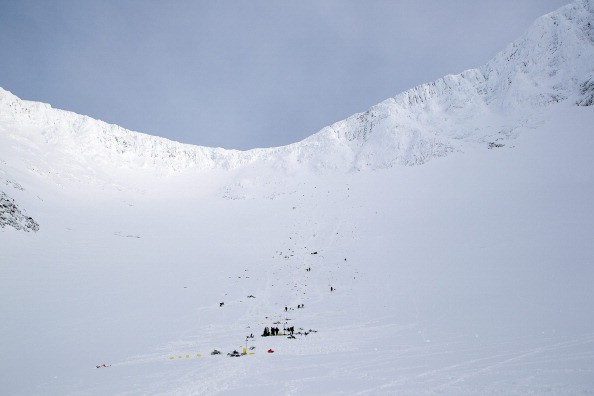The only remaining mountaintop glacier in Sweden, which was also its highest peak until 2019, is reduced by another two metres in height in the past year because of increasing air temperatures which climate change drove, Stockholm University says.
Researchers disclose that climate change is causing the melting, and this has seen the highest mountain in Sweden - Kebnekaise - lose over 20 metres of its height since the middle of the 1990s.

Climate Change
Kebnekaise massif's south peak was stepped down to second in the rankings of the country's mountains in 2019 following the melting of a third of its glacier. The north peak of Kebnekaise, which has no glacier, is presently the highest in the Nordic country.
In a statement on Tuesday, the university said: "On 14 August, the southern peak of Kebnekaise was measured at 2,094.6 metres (6,912 feet) above sea level by researchers from Tarfala research station. This is the lowest height that has been measured since the measurements started in the 1940s."
Global Warming
It also said the reduction in the peak and the altered look of the drift can primarily be explained by increasing air temperatures but also changing conditions of wind, which impact where the snow buildup in the winter.
It said the alterations give back long-established warming of the climate in Sweden, referring to the current UN climate panel report that said global warming had prompted an unparalleled melting of glaciers and was almost spiralling in a way that can't be controlled.
The measurement of the south peak of Kebnekaise was as high as 2,118 metres in the mid-1990s.
The Kebnekaise massif is situated about 90 miles (150 km) north of the Arctic Circle in the Scandinavian Mountains range that extends across greater parts of Sweden and northern Norway and is a portion of the Laponia World Heritage Site.

Kebnekaise
Kebnekaise is a mountain range in the län county of Norrbotten in northern Sweden. It is located 40 km (25 miles) from the Norwegian border and around 166 km (103 miles) north of the Arctic Circle. The name is a Sami word that means "kettle top."
Mount Kebne, measuring 2,111 metres (6,926 feet) which is one of its peaks, is the highest in the country. The roughly triangular part of the mountain range covers roughly 500 square km (200 square miles).
No creature can live there, except for a tract of the dwarf birch forest. It is completely deserted. It is made of winding crests, steep, distributed with small, sharp-crested ridges and summits. Due to the very high latitude, the glacier scenery of the rage is especially fine. Among the various glaciers, Kebnepakte, Björlings, Isfalls, Stor, and Rabots are the largest.
Related Article : Our Mountains Won't Get Any Taller, and Here's Why
For more news, updates about Kebnekaise and similar topics don't forget to follow Nature World News!
© 2025 NatureWorldNews.com All rights reserved. Do not reproduce without permission.





